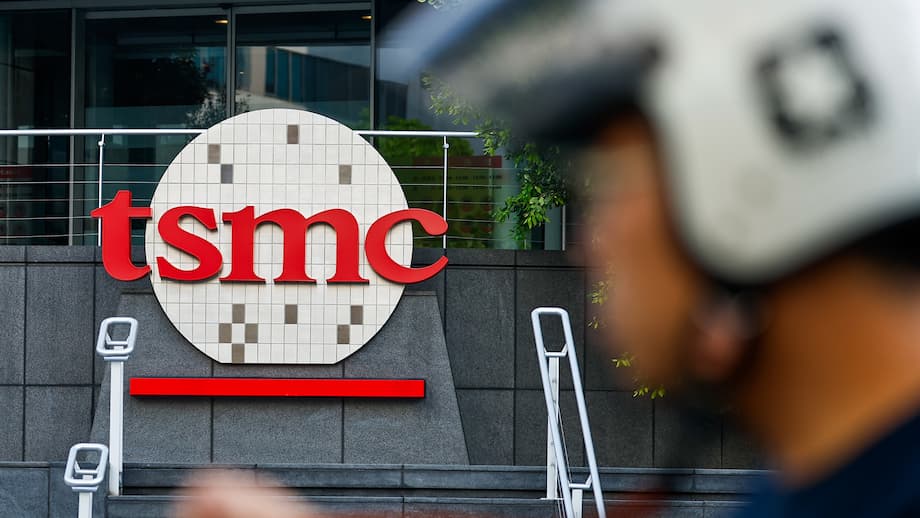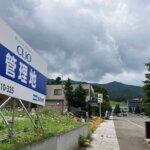TSMC’s 2nm Revolution: Why the World’s Top Chipmaker Is Cutting Out Chinese Suppliers
Taiwan Semiconductor Manufacturing Company (TSMC), the world’s largest contract chipmaker, is making a decisive move as it prepares to launch its most advanced 2-nanometer (2nm) chip production lines. In a significant shift, TSMC is removing all Chinese-made equipment from its new 2nm fabs, a decision driven by mounting U.S. regulatory pressure, the evolving geopolitical landscape, and the need to secure its technological and financial future. This move not only reshapes TSMC’s supply chain but also signals a broader realignment in the global semiconductor industry, where politics, economics, and technology are increasingly intertwined.
- TSMC’s 2nm Revolution: Why the World’s Top Chipmaker Is Cutting Out Chinese Suppliers
- What Is the 2nm Process and Why Does It Matter?
- Why Is TSMC Removing Chinese Equipment from Its 2nm Fabs?
- How U.S. Policy Is Shaping the Global Semiconductor Supply Chain
- Beyond Equipment: TSMC’s Broader Supply Chain Overhaul
- Business Implications: Who Wins and Who Loses?
- The Broader Context: Geopolitics, Innovation, and the Future of Chips
- In Summary
What Is the 2nm Process and Why Does It Matter?
The 2nm process represents the cutting edge of semiconductor manufacturing. In chipmaking, the “nanometer” (nm) designation refers to the size of the smallest features that can be etched onto a silicon wafer. Smaller nodes mean more transistors can fit on a chip, leading to faster performance, lower power consumption, and greater efficiency. TSMC’s 2nm technology will be the first to use gate-all-around (GAA) transistors, a major architectural leap from the FinFET design that has dominated the industry for over a decade.
According to TSMC, the 2nm node will deliver a 10% to 15% performance boost and a 25% to 30% reduction in power draw compared to its current 3nm chips. This leap is crucial for powering the next generation of smartphones, artificial intelligence (AI) accelerators, and high-performance computing devices. Major clients like Apple, Nvidia, AMD, and Qualcomm are already lining up for TSMC’s 2nm wafers, with Apple reportedly securing nearly half of the initial production capacity.
Why Is TSMC Removing Chinese Equipment from Its 2nm Fabs?
TSMC’s decision to exclude Chinese-made equipment from its 2nm production lines is rooted in a complex mix of regulatory, strategic, and technological factors. The immediate catalyst is the proposed U.S. Chip EQUIP Act, a bipartisan bill that would prohibit companies receiving American subsidies or tax credits from using semiconductor manufacturing equipment supplied by “foreign entities of concern”—a category that includes Chinese firms.
For TSMC, which stands to receive billions in U.S. government incentives for its new fabs in Arizona, compliance with these regulations is not optional. The company has historically used Chinese tools, such as etching machines from Advanced Micro-Fabrication Equipment Inc. China (AMEC) and systems from Mattson Technology (acquired by a Chinese investor in 2016), in its earlier advanced nodes. However, as U.S. lawmakers move to tighten restrictions, TSMC is proactively phasing out these suppliers to safeguard its access to American markets and subsidies.
As one industry analyst explained,
“TSMC’s removal of Chinese tools from 2nm production marks more than a technical shift—it’s a strategic realignment in a world where chipmaking is as political as it is technological.”
This move is not just about regulatory compliance. The transition to 2nm and GAA transistors demands the most advanced, precise, and reliable equipment available. In critical areas like lithography, metrology, and process control, global leaders such as ASML (Netherlands), Applied Materials (U.S.), and Tokyo Electron (Japan) are far ahead of Chinese competitors. By standardizing on these world-class tools, TSMC ensures both technological leadership and regulatory safety.
How U.S. Policy Is Shaping the Global Semiconductor Supply Chain
The U.S. government’s push to restrict Chinese technology from advanced chipmaking is part of a broader strategy to maintain an edge in the global tech race, especially in AI and defense. The Chip EQUIP Act, if passed, would amend the CHIPS and Science Act to bar federally funded projects from buying equipment from Chinese or other “foreign entities of concern.” While the bill is still moving through Congress, its impact is already being felt.
TSMC’s Arizona fab, a centerpiece of the company’s U.S. expansion, is expected to eventually produce up to 30% of TSMC’s most advanced chips. Ensuring these facilities are free from Chinese equipment is essential for continued access to U.S. subsidies and technology. As TSMC CEO C.C. Wei told Nikkei Asia,
“TSMC is accelerating its U.S. expansion, with up to 30 percent of our most advanced production—2nm and below—potentially coming from U.S. plants in the future.”
This policy-driven decoupling is not limited to TSMC. Other global chipmakers are also reviewing their supply chains to reduce reliance on Chinese equipment and materials, reflecting a new era where national security concerns and technological sovereignty are paramount.
Beyond Equipment: TSMC’s Broader Supply Chain Overhaul
TSMC’s supply chain realignment goes beyond just equipment. The company is conducting comprehensive audits of all materials, chemicals, and gases used in its Taiwan and U.S. fabs, aiming to minimize exposure to Chinese suppliers. High-purity chemicals, specialty gases, and defect-free wafers are critical for advanced chip production, and any disruption could have billion-dollar consequences.
According to reports from Digitimes and Nikkei Asia, TSMC is also scrutinizing its Taiwanese equipment and materials vendors. Suppliers with high profit margins or heavy reliance on Chinese sales may be excluded from TSMC’s approved vendor list for 2026. This dual-pronged approach—aligning with U.S. policy and tightening control over supplier costs and risk profiles—allows TSMC to consolidate its leverage and ensure supply chain resilience.
However, this strategy is not without risks. Some Taiwanese firms, if excluded from TSMC’s supply chain, may pivot further toward China, potentially deepening the divide that TSMC is trying to manage. The company must balance the need for compliance and control with the realities of a globalized industry.
China’s Response: Catching Up, But Still Behind
China has made significant progress in developing its own semiconductor equipment industry, particularly in areas like etching, thin-film deposition, and cleaning tools. Companies such as Naura have become major global players. However, in the most advanced segments—lithography, high-end metrology, and ion implantation—Chinese firms still lag behind, with localization rates below 10%.
This gap underscores why TSMC and other leading chipmakers continue to rely on non-Chinese suppliers for their most advanced production lines. At the same time, China is doubling down on efforts to achieve self-sufficiency in semiconductor manufacturing, investing heavily in domestic innovation and supply chain localization.
Business Implications: Who Wins and Who Loses?
TSMC’s move to exclude Chinese equipment from its 2nm fabs has far-reaching consequences for the global tech ecosystem. For TSMC, the benefits are clear: regulatory compliance, access to U.S. subsidies, and continued technological leadership. For its clients—Apple, Nvidia, AMD, Qualcomm, and others—the assurance of uninterrupted, state-of-the-art chip supply is invaluable.
Apple, in particular, is expected to take nearly half of TSMC’s initial 2nm production capacity, with the new chips likely to debut in the iPhone 18 series in 2026. Other major clients, including AMD, Broadcom, Intel, MediaTek, and Qualcomm, will also benefit from the performance and efficiency gains of the 2nm process.
For Chinese equipment makers like AMEC and Mattson Technology, the loss of TSMC as a customer is a significant blow. It also signals to the broader industry that access to the most advanced chipmaking markets will be increasingly determined by geopolitical considerations, not just technical merit or price.
Supplier Audits and the New Rules of Engagement
TSMC’s intensified supplier audits reflect a new reality for the semiconductor industry. Vendors must now demonstrate not only technical excellence and cost competitiveness but also geopolitical alignment and risk mitigation. This trend is likely to accelerate as governments around the world tighten controls over critical technologies and supply chains.
As one industry observer noted,
“The race to 2nm is being shaped as much by politics and economics as by transistor physics. The supply chain is narrowing to a smaller pool of politically acceptable players.”
The Broader Context: Geopolitics, Innovation, and the Future of Chips
TSMC’s removal of Chinese suppliers from its 2nm fabs is emblematic of a larger shift in the global semiconductor landscape. The industry is fragmenting along geopolitical lines, with the U.S. and its allies on one side and China on the other. This decoupling is driven by concerns over national security, technological leadership, and economic competitiveness.
For TSMC, aligning with U.S. policy ensures continued access to the world’s most lucrative markets, the latest equipment, and vital government support. For China, the move highlights the challenges of achieving self-sufficiency in advanced chipmaking and the urgency of closing the technology gap.
At the same time, the stakes for the global economy are enormous. Semiconductors are the foundation of modern technology, powering everything from smartphones and data centers to cars and medical devices. Any disruption in the supply chain can have ripple effects across industries and continents.
In Summary
- TSMC is removing all Chinese-made equipment from its new 2nm chip production lines to comply with anticipated U.S. regulations and secure access to subsidies.
- The 2nm process is a major technological leap, promising significant performance and efficiency gains for clients like Apple, Nvidia, and AMD.
- U.S. policy, especially the proposed Chip EQUIP Act, is driving global supply chain realignment and forcing chipmakers to choose sides in the U.S.-China tech rivalry.
- TSMC is also auditing its entire supply chain, including chemicals and materials, to reduce reliance on Chinese sources and tighten control over supplier risk.
- China is making progress in semiconductor equipment but still lags in the most advanced technologies, underscoring continued dependence on foreign suppliers.
- The global semiconductor industry is entering a new era where politics, economics, and technology are inseparable, and supply chain decisions have far-reaching implications.




